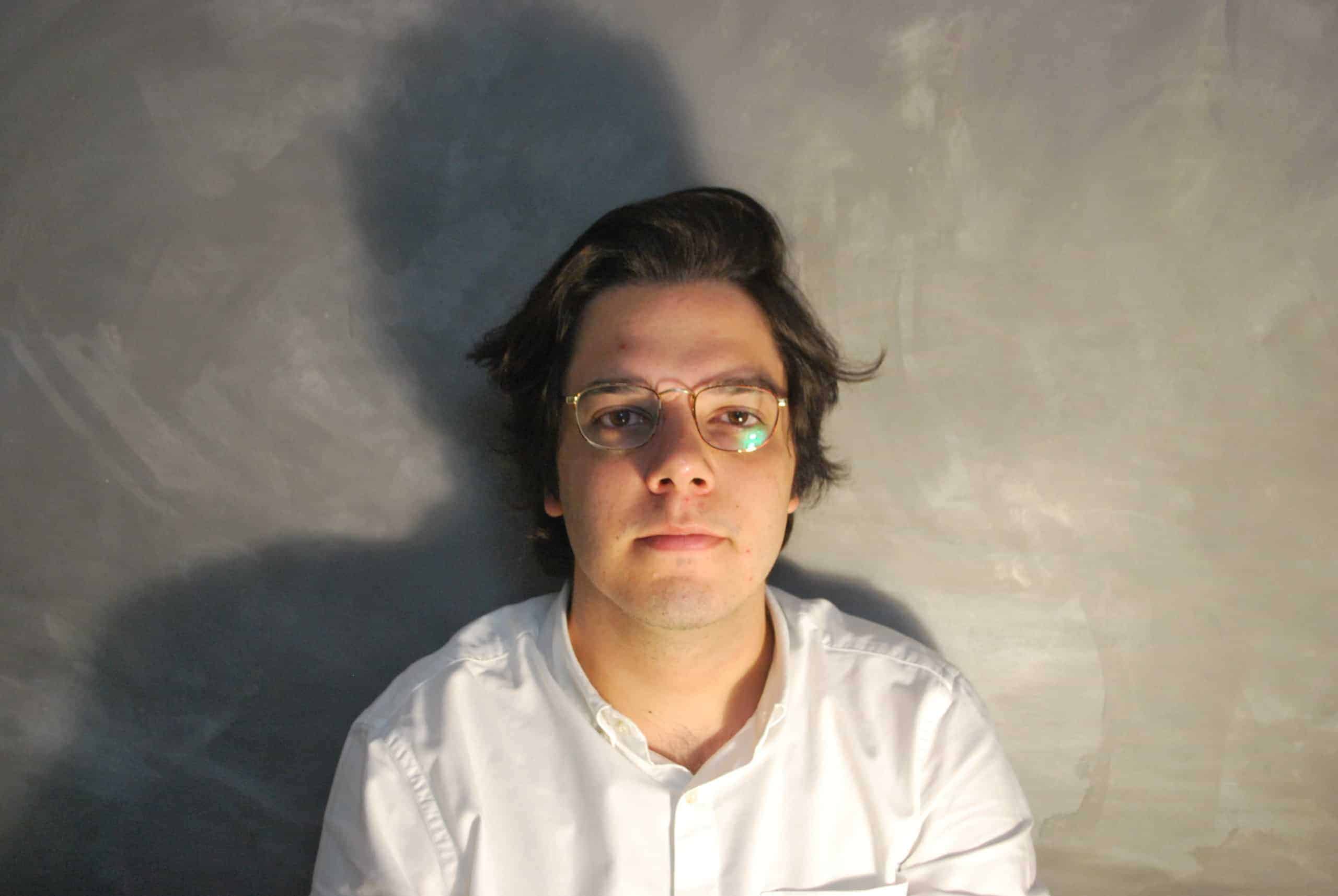
In the webpage of the Center for Body Up Co-Regulation, Beth Dennison explains that “Co-Regulation means shifting emotional gears in our nervous systems in connection with others”. In this special interview for MysticMag, we talked with Beth about co-regulation, how to heal from traumas, connecting with others and much more. Check out the interview below!
On your website, you mentioned the need for connection with others in order to heal from many traumas. How can anyone achieve those connections on a day-to-day basis?
Yes! We, humans, need safe connections, to heal, to learn, and to thrive. This is so because a healthy connection with trusted others increases our capacity for managing life’s challenges in the present and also for healing our past.
Healing from trauma means staying present and being able to digest things that were overwhelming for us in the past. So, anything we can do to expand our capacity to face things that were once too much is helpful. Other people’s caring attention can help us expand our capacity to stay present. Connection actually helps the hippocampus stay engaged, which helps us process what was left in implicit memory (the trauma) that has been too hard to digest. When we are able to stay present with the memory and put it in the context of a timeline, organized around a sense of self, we heal.
To cultivate safe, embodied relationships that support healing, I use co-regulation for myself and with my trauma clients. Specifically, I use Body Up Co-Regulation (BCR), which I developed and which anyone can easily learn and practice.
What would you suggest to the average person to cultivate healing connections on a day-to-day basis?
Start by noticing what people and circumstances are good for you, especially what you know is good for you from the body up, good for your nervous system and your whole embodied self. It is easy to drop our connection with our bodies when we are around other people. Practice tracking yourself even when you are around others.
The average person can certainly focus on co-regulation in their life. Do you need connection or inspiration or relaxation? Who helps you with that? It can be as simple as noticing what helps you feel connected, and how you feel when you’re with different people in your life. Beyond that, Body Up Co–regulation offers a simple, helpful structure that you can use regularly to find authentic connections and develop your co-regulation skills.
The interactions with other people that expand your capacity to be present are really valuable. And whether you are doing simple co-regulation exercises with embodied mirroring, or you’re noticing what feels good and is coregulatory for you on a day-to-day basis, that’s going to expand your capacity to build safe relationships and heal from trauma.
In your long career, I believe that many theories and beliefs in your field have changed. What has stayed the same over your career and what have you seen change over the decades?
First, let me say something about my field, because I’ve always been a huge advocate of embodiment and body awareness, and a lot of psychotherapy doesn’t pay attention to the body.
What has changed in the larger field is that, more and more, people and professionals are recognizing the importance of the body and the nervous system in healing from trauma.
Psychotherapy used to be the “talking cure”. Analysis wasn’t about interaction in the relationship or about embodiment. For the first 40 years of my career, I was a trailblazer, championing embodiment, and now, I am relieved to say, embodiment is popular. That’s a big and important change.
Another relatively new idea in the field is the idea of co-regulation which comes in from the interdisciplinary field of interpersonal neurobiology. This newer lens shows the importance of the role that relationships and our nervous systems play in healing. Stephen Porges’ Polyvagal theory highlights what I have long observed, safety is essential to healing. We need to feel safe both in our bodies and in our relationships. The brain does not function at its best when threatened.
What has not changed nearly enough is the habit of hierarchical relationships in the field. There are times in therapy when it is important to have and use professional authority, expertise, and experience: People need guidance to learn how to regulate their nervous systems and their lives. However, safety happens when we know we are empowered, and that our needs and our experience matter. I train therapists to gain flexibility in their role, so that they can co-regulate appropriately, and keep their clients company in learning healthy relating.
When we are dealing with the worst, most difficult trauma we don’t need someone accompanying us with an attitude of, “I’m okay and you’re not okay.” We need someone to be right in there with us as a peer, staying connected and caring as we face and share our worst fears and experiences.
What is the process of somatic experience and who can benefit from that?
Actually, pretty much everyone in this culture can benefit from SE and Body Up Co-Regulation, but trauma survivors especially. At a very basic level, SE is about building our capacity to stay present with potentially overwhelming experiences. We all have experiences that have been overwhelming and that are hard for us to digest. We heal when we can stay present and digest the things that once overwhelmed us. We function better in our world when we can stay present and clear-thinking with the complexity of modern life.
SE leans on resourcing, titration, and discharge to build capacity. A resource is anything that helps us feel safer and more able to stay present, grounded, and connected with ourselves and others. It helps us to know we are ok in the face of challenges, present or remembered.
Titration means finding ways to take things a little at a time so that they are manageable. Discharge involves feeling things that are intense as they move through our physiology. Discharge is how the nervous system releases new or stored energy and emotion. It is physical and might involve crying, or trembling, or temperature flushes.
We can use an image or memory as a resource. We can use reassuring things or people in the environment. In SE we often draw on body awareness, our somatic experience, as a resource. We might focus back and forth between a body part that is demanding our attention with pain and one that feels good, or at least less bad.
In SE and in Body Up Co-Regulation (BCR) cultivating safety is always a high priority. We are careful to titrate experience into manageable, digestible pieces and to include each person’s understanding of themself and their experience.
Body Up Co-Regulation uses many of the same neurological pathways as SE, adding emphasis on the relational component to the embodiment work. BCR also offers very accessible practices to learn and implement with people in your life. Communication on a nervous system level happens unintentionally all the time, however, it can be profoundly effective to bank on the nervous system’s capacity for connection, regulation, safely, and healing – on purpose!
The idea of co-regulating seems very interesting! When did you have the idea of opening a center?
Obviously, I find co-regulation to be a compelling idea – and experience! Co-regulation is our birthright. We evolved to regulate our nervous systems together. It is more efficient than regulating alone (which is also useful and necessary). We live longer and build better societies when we are well-regulated and wired for cooperation.
Opening the Center has been the natural development of my life’s work. Over the decades, it became clear to me through working with my trauma clients that in order to heal they need co-regulation. It also became clear to me that my trauma clients are the “canaries in the coal mine” for our culture – that we all need what my clients need. They just need it more urgently, for two important reasons – to expand their capacity to stay present with hard things, and to dissolve shame.
Trauma fragments us, and shame cements the fragmentation in place. As I often say, “Shame is the blade that splits our wholeness into a presented self and a hidden, held-back self.” Co-regulation helps us heal the fragmentation.
I soon realized that it made sense to open the Center to support co-regulation in therapy and in the culture in general. Providing this work to the public and training other therapists to use it is the culmination of my career.
I have been a ”holistic therapist” since the 70s. In the nineties, I started doing SE and realized that somatic psychotherapy is what I had been doing all along. With practice, I found it important to put more emphasis on the therapeutic relationship than SE offered. We know from research that for good therapeutic outcomes the quality of the relationship between the client and the therapist is more important than the modality used. In my reading about interpersonal neurobiology, I came across terms like mutual regulation, interactive regulation, and then co-regulation. I knew immediately that this is what I had been honing in on. I chose to popularize the word co-regulation in my local community and in my work. I continue to read about the neurobiology of co-regulation and attachment and to center my thinking and practice on this idea of co-regulation from the body up.
Through the Center, I teach and write and offer supervision to therapists seeking to build embodiment, regulation, and healthy relationship skills into their practices. Our latest ebook, Co-Regulation Revolution: Using Embodied Connection for Health and Anti-Oppression, will be published this year. It offers theory and exercises for Body Up Co-Regulation, with online teaching videos and demo videos for the exercises. The book lays out the scope and breadth of this work, as well as how to use it online for personal, professional, and global benefit.
Would you explain for us the three pillars of Body Up Co-Regulation?
Sure! The three pillars of BCR are the basic three pillars of all communication: Expression, reflection, and response. I know that healthy peer relationships with good communication are essential for healing trauma and that they give us a foundation for collaboration and mutual problem-solving. BCR practice builds verbal and non-verbal communication circuits in the brain, nervous system to nervous system. This supports healing, well-being, and survival.
So, let me describe the three pillars:
Expression is about showing yourself. It can be words, gestures, facial expressions, tone of voice, movement or even holding still. We only get a response if we let ourselves be seen or felt in some way.
Reflection is about being seen and getting a reflection, a sense of how other people see you. Mirroring is a tried and true form of reflection that we use routinely in BCR.
Response is about how the people and world around us are affected by our expression. Responses show us that we have made a difference. We need to know we make a difference.
In a way, expression says, “I exist.” Then, reflection affirms that, “I belong because can see that someone is receiving me.” And a response shows that, “I matter because now I have your attention and we’re having a dialogue.”
BCR provides a structure for practicing these three pillars of communication in very simple yet powerful ways. Because this work is embodied, the practices and learning really land for people.
How can we develop a sense that we belong and we matter especially after traumatic or difficult experiences?
I started to write a book on shame in 2002. It was powerful and convincing and incredibly depressing. I realized it would not be useful to put that perspective out until I had antidotes to shame. So, I searched and experimented and read. Here is what I found: Shame is a social emotion designed to make sure we behave in ways that support our belonging and mattering. Over evolutionary time, belonging and mattering have been serious survival issues.
What helps us feel like we belong? In-person, safe touch and sharing weight (as in a puppy pile, or a hand on a shoulder or the BCR Arm Hang exercise) send a direct signal to the nervous system that we belong. While it is not possible to share weight online, careful attunement to each person’s sense of safety also signals belonging.
What helps us feel like we matter? The quickest, most accessible way to know that we matter is when someone else mirrors our rhythm, which is easy to do online. It can be our rhythm in speech, movement, or even breathing. BCR relies on this often, to very good effect.
There are many other different ways we belong and we matter. Having caring company, receiving a hug, telling your story to a good listener, sharing food, … all of these things can help in a difficult situation whether it’s a scraped knee, a car accident, or the death of a loved one.
PTSD develops when we do not get the support we need to heal around the time of an overwhelming event. As a culture, we are not very skillful at giving people the support they need to heal from trauma at a nervous system level. The isolation, silence, and ensuing shame leave us avoiding the overwhelming experience so we do not digest it and heal. SE and BCR give us effective healing tools.
I used to need to spend a lot more time developing a sense of safety, belonging, and mattering with people before they could venture into sharing and healing their trauma.
Now, I often use BCR and embodied relating as a part of building safety and trust. In BCR, with mirroring (for example, swaying back and forth as the other person leads the rhythm) we access a sense of mattering on a nervous system level. Safety, belonging and mattering develop fast when we engage authentically, nervous system to nervous system, with the safe structures of BCR.
For most folks, a key part of healing is knowing you are in charge of yourself and your healing process. You have agency, as well as belonging and mattering. You decide what is safe. You are the authority over your own experience and history. Allowing and encouraging this is a part of my job that I take very seriously. I cultivate and teach about when and how to shift from expert authority, to coach, to peer. This requires having the ability and humility to co-regulate with clients as a peer, a fellow human rather than constantly relating from my professional role.
Agency in therapy is a part of anti-oppression work – but all oppressive dynamics (racism, sexism, ableism, etc) need healing at the level of embodied relationship. My mission, through the Center, is to train professionals in healing trauma, and to pave a path for embodied, anti-oppression work in our culture. Ultimately, Body Up Co-regulation is about building cooperative, peer relationships for healing and collaborative action in our world.
Beth Dennison – MA in MFT, MEd, LMT, SEP – brings 50 years of teaching, psychotherapy, and study of neuroscience to teaching and trauma therapy that rewire our brains for connection and co-regulation. Beth is a master somatic psychotherapist, author, teacher, and the founder of Body Up Co-Regulation. Co-Regulation Revolution: Using Embodied Connection for Healing and Anti-Oppression, her latest book, will be published soon – find the book and a wealth of accessible co-regulation education at wecoregulate.com



